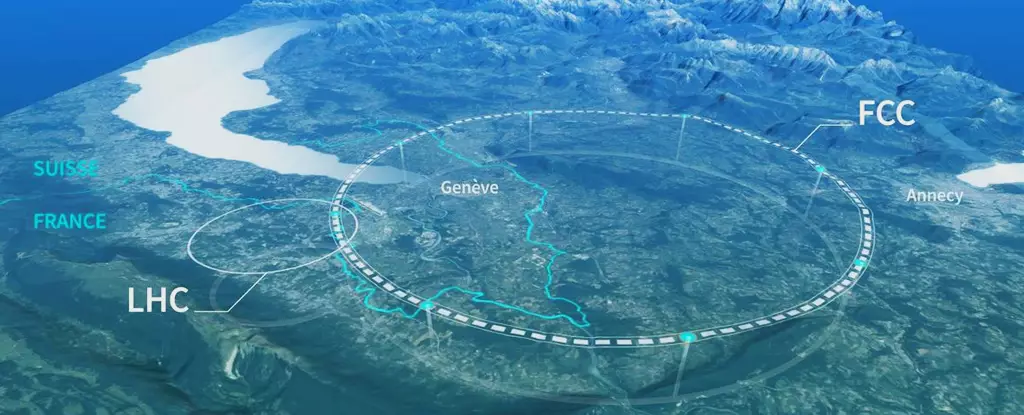Science and engineering have always pushed the boundaries of human understanding, and one of the most intriguing examples of this is the development of particle colliders. These powerful machines have become essential tools in unraveling the mysteries of the universe at the fundamental level. The Large Hadron Collider (LHC) was a game changer in the field, but now scientists and engineers are embarking on an even more ambitious project – the Future Circular Collider (FCC). This proposed new collider will not only be three times longer than the LHC but will also have the capability to smash particles together with significantly more energy.
The LHC, with its impressive 27-kilometer circumference, brought us closer to completing the picture of the Standard Model with the discovery of the Higgs Boson. However, since then, progress in uniting gravity and quantum physics has stalled. Scientists and engineers are now looking for the next breakthrough, and they believe that the FCC may hold the key. The FCC study has already delved into various designs for the collider, envisioning a research infrastructure housed within a 100-kilometer underground tunnel. This ambitious project promises a physics program that will propel high energy research into the next century.
Of course, building a new collider of this magnitude comes with its fair share of challenges. One major consideration is selecting the ideal location for the underground tunnel. It must avoid geologically interesting areas, optimize future collider efficiency, and ensure connectivity with the LHC. Additionally, the project must also adhere to social and environmental impacts on the surface buildings and infrastructure. To address these challenges, CERN, the European Council for Nuclear Research, is considering a range of layout options to minimize the impact on the area.
Within the proposed FCC tunnel, two colliders will work in tandem. The first phase is scheduled for completion around the mid-2040s and will consist of an electron-positron collider (FCC-ee). This collider aims to provide unparalleled precision measurements and potentially reveal physics beyond the standard model. Following closely behind is the proton-proton collider (FCC-hh), which will surpass the energy capability of the LHC by eightfold. The ultimate goal of the FCC is to push particle collisions to energies of 100 TeV, opening up new realms of physics for exploration.
Realizing the ambitious goals of the FCC will require significant technological advancements. Scientists and engineers around the world are already collaborating on exploring these possibilities. Over 150 universities are actively involved in researching and developing the necessary technologies to make the FCC a reality. From new accelerator designs to advanced detector systems, the global scientific community is working together to unlock the next chapter in our understanding of the universe.
The future of particle colliders is poised to take a giant leap forward with the development of the Future Circular Collider. This ambitious project promises to propel high energy physics research into the next century, potentially unveiling new physics beyond the standard model. With challenges in design and engineering to address, scientists and engineers are exploring various options to ensure the success of the FCC. The collaboration of over 150 universities around the world demonstrates the global commitment to advancing technology and unlocking the mysteries of the universe. As we look ahead, the prospect of pushing particle collisions to energies of 100 TeV leaves us filled with anticipation for the fascinating discoveries that lie ahead.

Leave a Reply